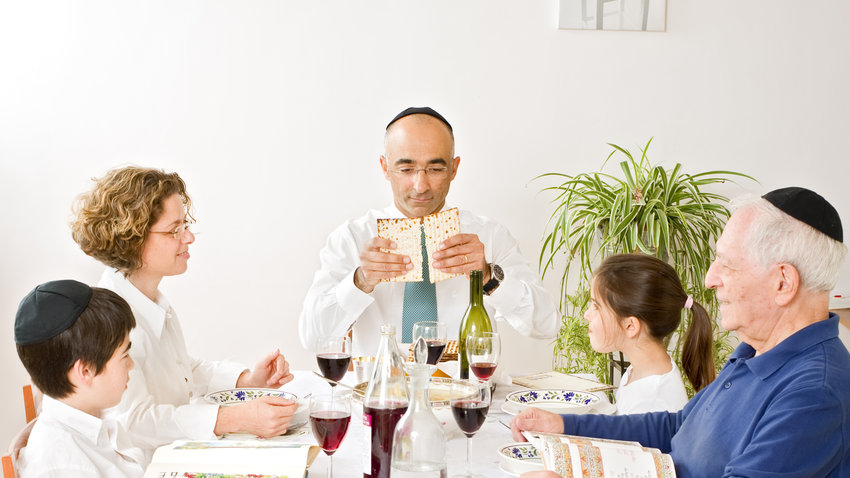
PASSOVER FOR YOUR NEIGHBORS
Our Jewish friends and neighbors are celebrating Passover this week—from the sundown that welcomed Sabbath (April 4) to the sundown that concludes Sabbath (April 11). Included in their festivities will be the solemn but joyous celebration of the Seder. Replete with candles, the unleavened matzah bread, the maror bitter herbs, and a sumptuous dinner, this annual ritual Seder gathering of family and friends around the supper table is unlike any other Jewish celebration. And of course it is for them a powerful, emotive reminder of God’s epic midnight deliverance of the children of Israel from Egypt long ago. The Passover Seder’s fifteen steps—from the opening Kadesh to the concluding Hallel and Nirtzah—not only serve as a symbolic union with the ancient faith community, but also as a collective expression of hope that God will even yet bring ultimate deliverance for His children scattered across the earth. As one Seder website testifies: “We recognize that despite our freedom we still live in a fractured world where things are less than perfect. We hope, dream and sing of a world redeemed as we conclude this year’s Seder, and commit ourselves to being part of this unfolding narrative” (http://www.aish.com/h/pes/t/si/The-Passover-Seders-15-Steps.html?s=show&tab=y). I like that—“We hope, dream and sing of a world redeemed . . . and commit ourselves to being part of this unfolding narrative.” Don’t we all—Jews, Christians, Seventh-day Adventists alike? “For whenever you eat this bread and drink this cup, you proclaim the Lord’s death until he comes” (1 Corinthians 11:26). So wrote the rabbi and apostle Paul. But I’m not thinking of the ritual meal (whether it is the Seder or the Lord’s Supper). I wonder instead about the hope that the meal is intended to nourish, the hope of the yet-to-come Exodus deliverance of the people of God at the Second Coming of Christ. How vibrant is that adventist hope these days? The hotly contested nuclear accord with Iran, the Islamic State meltdown in the heart of the Middle East may distract us from the chronic entropy with which the rest of the planet struggles—the leakage of economies large and small, a crumbling of moral foundations, the demise of genuine social progress or even spiritual hope. The hype of our entertainment and sports frenzy notwithstanding, there is a collective, almost palpable longing for some Moses figure to rise up and shepherd this broken civilization toward healing. From my humble perspective we really can get there from here, without a multiplication of complex moves. In fact just a short step lies between here and there. But before we get there, there is this promise: “‘ . . . and I will bring judgment on all the gods of Egypt. I am the LORD. The blood will be a sign for you on the houses where you are; and when I see the blood, I will pass over you’” (Exodus 12:12-13). In the final Exodus, those who are passed over (i.e., delivered by the Almighty) are those who take refuge “under the blood,” the scarlet sign of the Lamb of God. That the Pharaoh’s of earth will refuse the blood is obvious. But not all citizens will share that rejection. The Exodus narrative declares, “Many other people [Egyptians] went up with them [the children of Israel]” (Exodus 12:38). In that midnight neighbors, acquaintances, even strangers turned to the God of the Israelites, seeking refuge with them “under the blood,” thus inheriting with them the promise of the Promised Land. Evangelism isn’t an obsolete program of the church. As in the Exodus, it is the opening of our homes and hearts to millions who will yet find in Christ the only Deliverer from a disintegrating world. And the good news is they live next door.